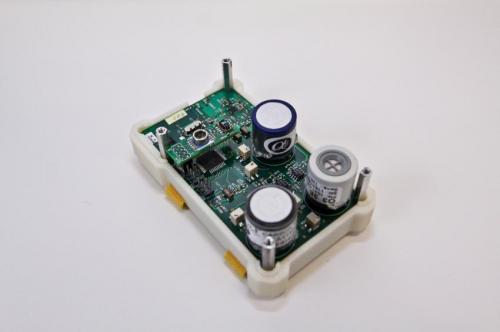

Computer scientists at the University of California, San Diego have built a small fleet of portable pollution sensors that allow users to monitor air quality in real time on their smart phones. The sensors could be particularly useful to people suffering from chronic conditions, such as asthma, who need to avoid exposure to pollutants.
CitiSense is the only air-quality monitoring system capable of delivering real-time data to users' cell phones and home computers—at any time. Data from the sensors can also be used to estimate air quality throughout the area where the devices are deployed, providing information to everyone—not just those carrying sensors.
Just 100 of the sensors deployed in a fairly large area could generate a wealth of data—well beyond what a small number of EPA-mandated air-quality monitoring stations can provide. For example, San Diego County has 3.1 million residents, 4,000 square miles—and only about 10 stations.
"We want to get more data and better data, which we can provide to the public," said William Griswold, a computer science professor at the Jacobs School of Engineering at UC San Diego and the lead investigator on the project. "We are making the invisible visible.
" The CitiSense sensors detect ozone, nitrogen dioxide and carbon monoxide, the most common pollutants emitted by cars and trucks. The user interface displays the sensor's readings on a smart phone by using a color-coded scale for air quality based on the EPA's air quality ratings, from green (good) to purple (hazardous).
Researchers provided the sensors for four weeks to a total of 30 users, including commuters at UC San Diego and faculty, students and staff members in the computer science department at the Jacobs School of Engineering. Computer scientists presented findings from these field tests at the Wireless Health 2012 conference in San Diego earlier this year.
Read more at: http://phys.org/news/2012-12-small-portable-sensors-users-exposure.html#jCp